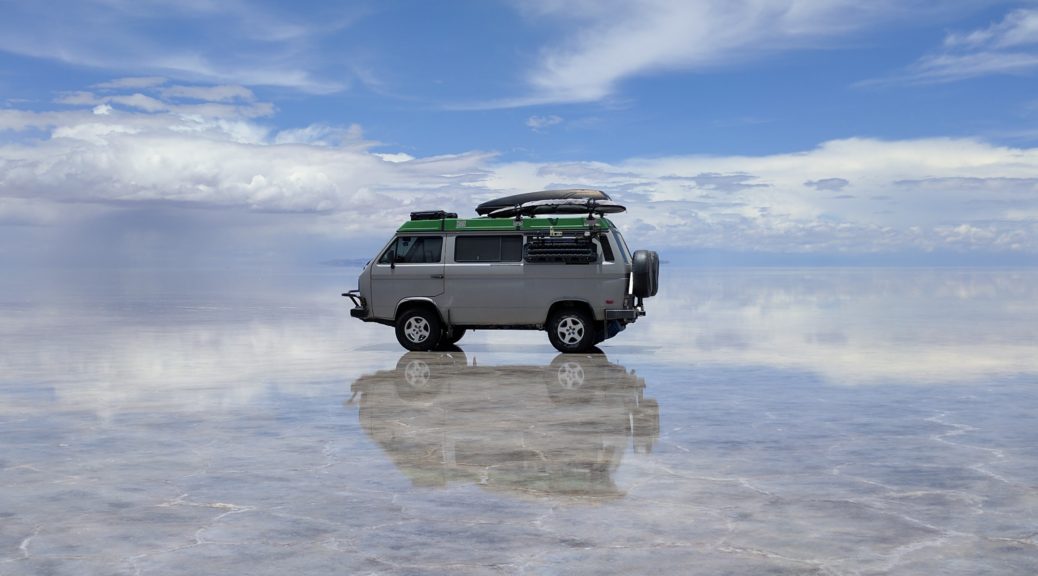
Absorbed by the Amazing Bolivian Altiplano
The nose of Koru kept us pointing south as he was ready to sniff out some more great things Bolivia had to offer. Finding peace in the open roads of the Altiplano with minimal traffic and new smooth pavement, we took a deep breath of the air at 13,000ft and kruised along. 
Having heard about a climbing area not far from the highway, we made a small detour on an infrequently traveled dirt road. After driving for what seemed like forever on open plains, we eventually stumbled upon a small village with a large monolith nearby. This was our spot! 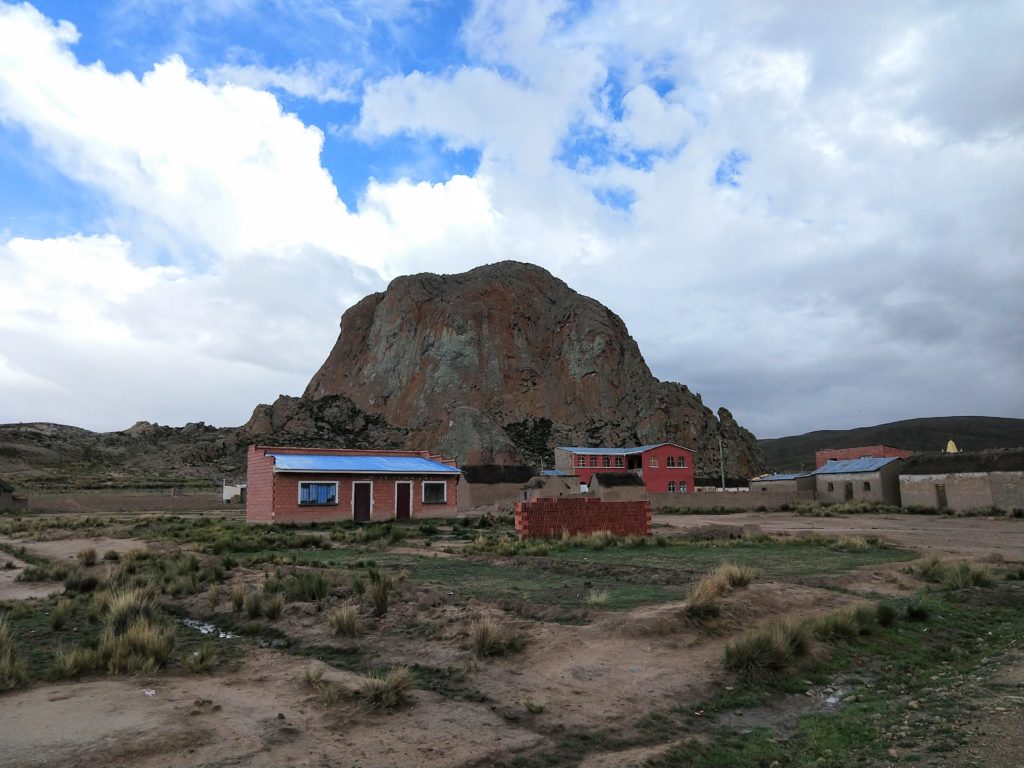 A kind family allowed us to camp as close to the rock as possible on their land, making it easy for us to climb the following morning.
A kind family allowed us to camp as close to the rock as possible on their land, making it easy for us to climb the following morning.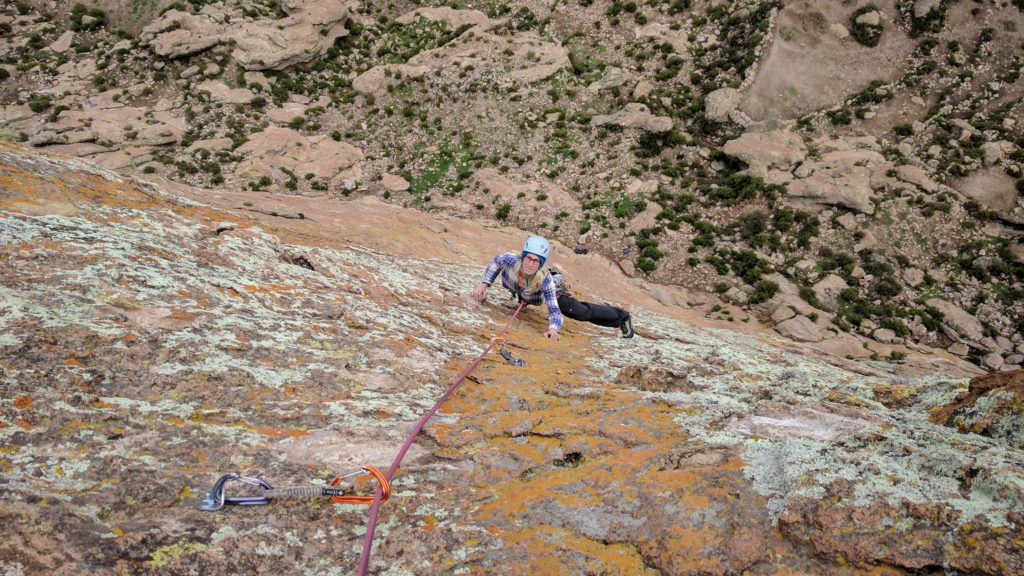 The weather moved in again, so after a few routes and standing atop the monolith with great views, we made our way back to the van to relax.
The weather moved in again, so after a few routes and standing atop the monolith with great views, we made our way back to the van to relax.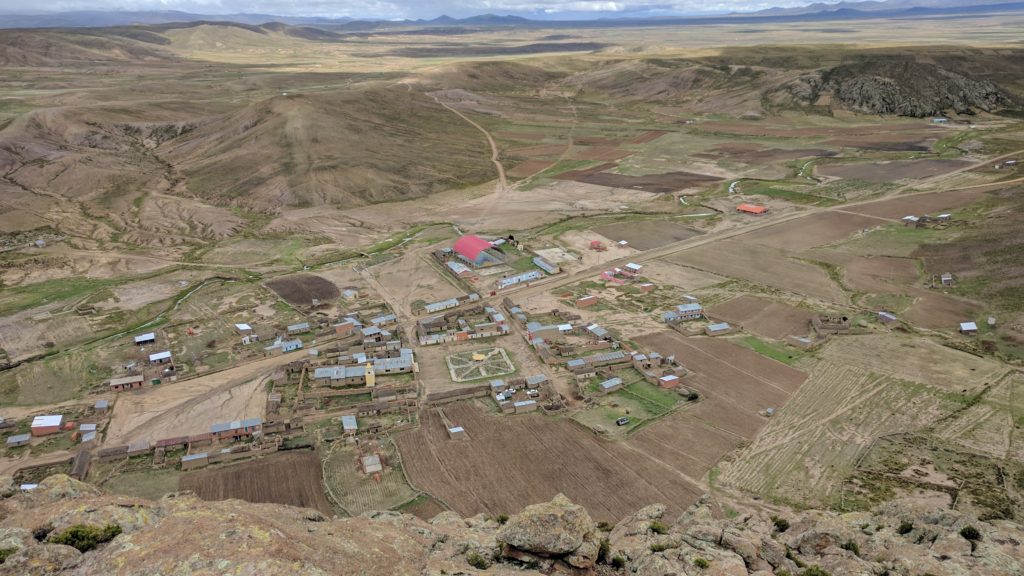 One of the family’s sons came by full of curiosity and quickly found a similar passion shared with Matt, soccer. They proceeded to juggle and practice together for his upcoming game, as he was the star goalie and enjoyed any chance to prepare before his games.
One of the family’s sons came by full of curiosity and quickly found a similar passion shared with Matt, soccer. They proceeded to juggle and practice together for his upcoming game, as he was the star goalie and enjoyed any chance to prepare before his games.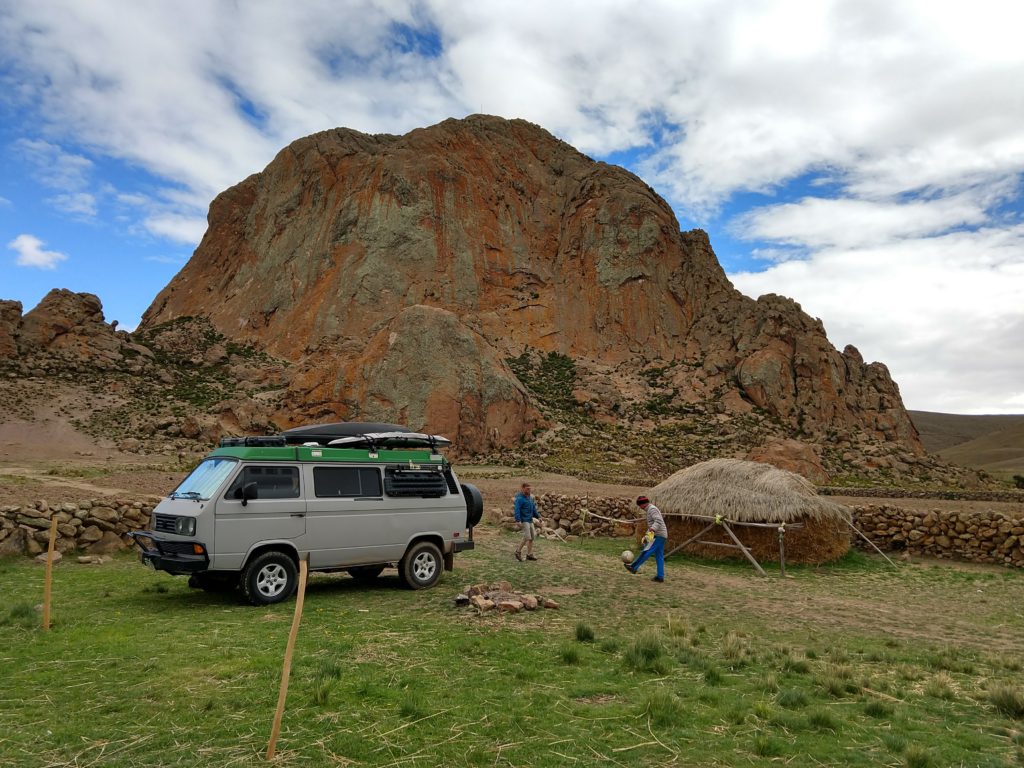 He told Matt that the village had just received a new covered ‘concha’ (small soccer field the size of a basketball court used for several sports) like many other villages to help promote athletic activity. His local team now has the pleasure of traveling to nearby villages to play each other on their new ‘conchas’.
He told Matt that the village had just received a new covered ‘concha’ (small soccer field the size of a basketball court used for several sports) like many other villages to help promote athletic activity. His local team now has the pleasure of traveling to nearby villages to play each other on their new ‘conchas’. 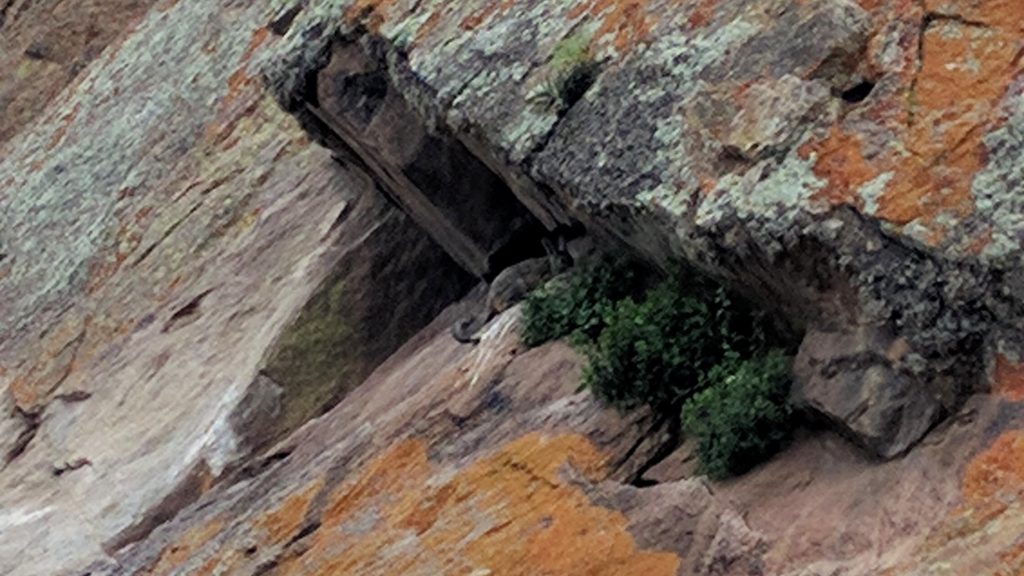 In the meantime, Sarah was fascinated by the scampering chinchillas which lived all over the monolith (see blurry photo above).
In the meantime, Sarah was fascinated by the scampering chinchillas which lived all over the monolith (see blurry photo above). 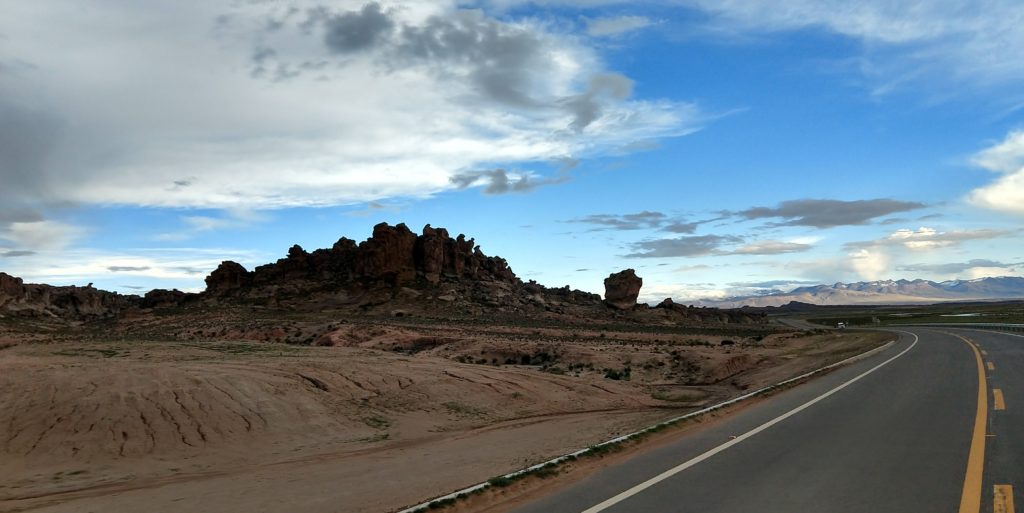 Leaving the quaint little village, we drove through more stunning scenery with sunsets that were to die for.
Leaving the quaint little village, we drove through more stunning scenery with sunsets that were to die for. 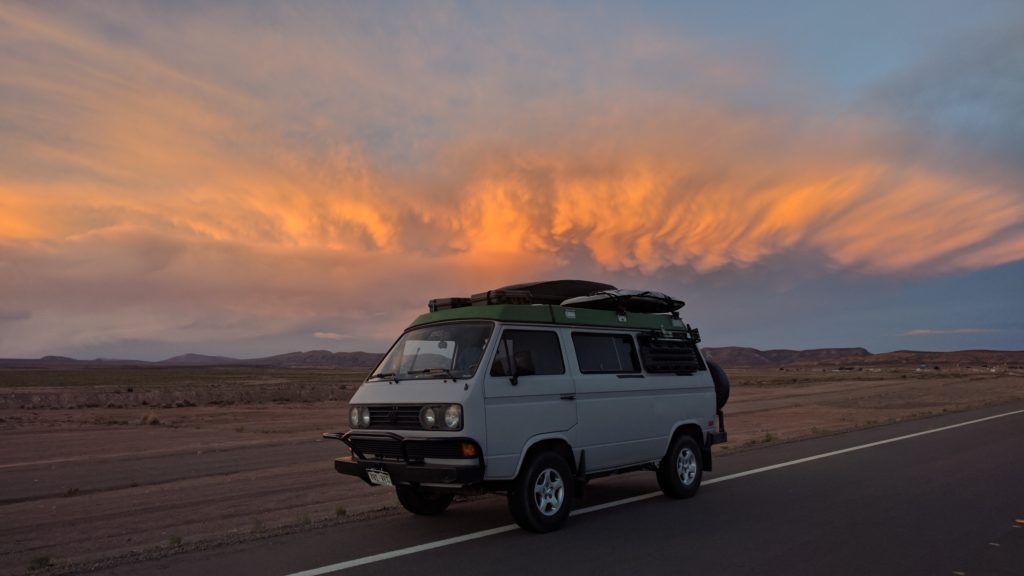 Along the way, we stopped in a small little town and grabbed a snack from the locals. Sometimes good, sometimes bad, always an adventure. This snack of delicious ‘papa rellenas’ was a success.
Along the way, we stopped in a small little town and grabbed a snack from the locals. Sometimes good, sometimes bad, always an adventure. This snack of delicious ‘papa rellenas’ was a success. 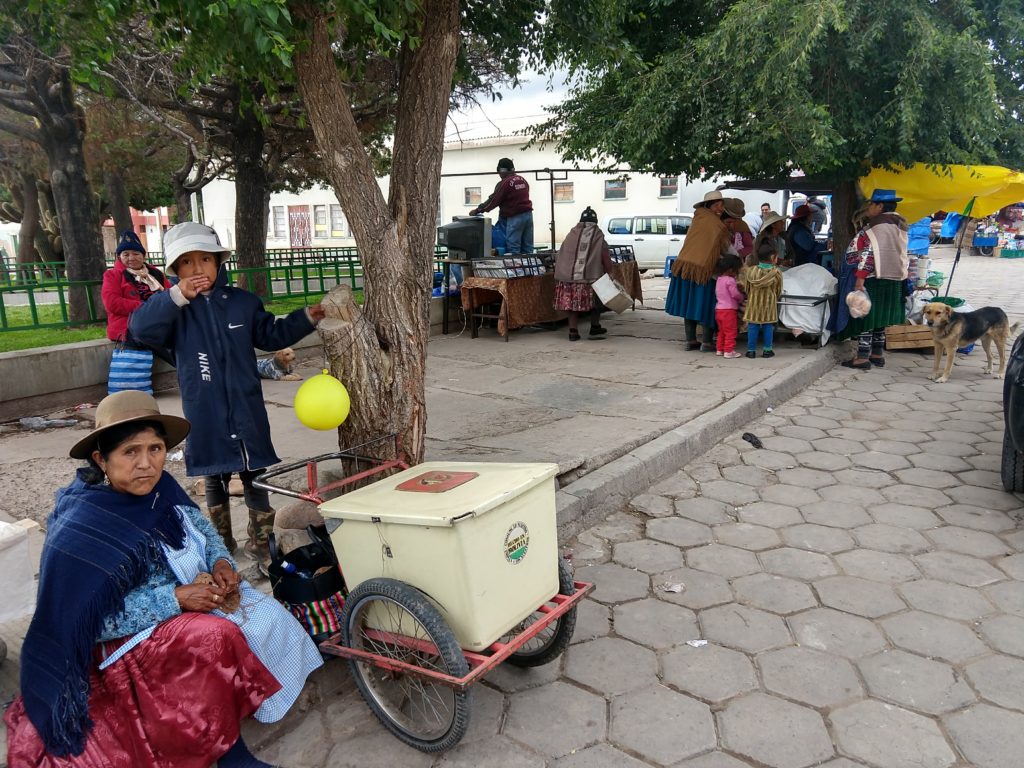 Bolivia’s altiplano was beautiful and reminiscent of wild Wyoming. On our way to the next goal, the Salar de Uyuni, the world’s largest salt flat, we spent the night next to a remote ‘mirador’ just 30 minutes from the town of Uyuni.
Bolivia’s altiplano was beautiful and reminiscent of wild Wyoming. On our way to the next goal, the Salar de Uyuni, the world’s largest salt flat, we spent the night next to a remote ‘mirador’ just 30 minutes from the town of Uyuni.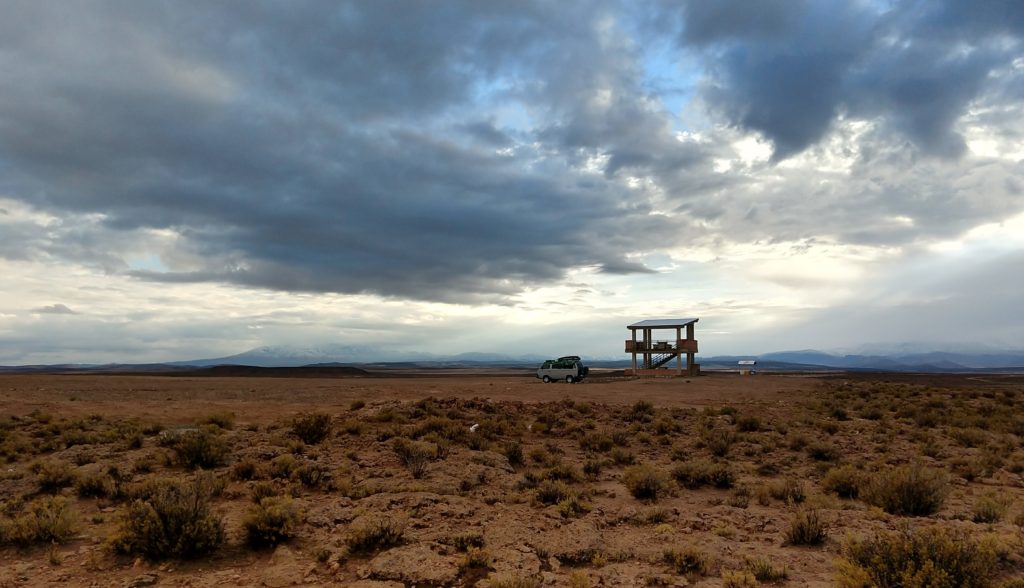 Here we could see the mountains, plains and salt flats in the distance.
Here we could see the mountains, plains and salt flats in the distance.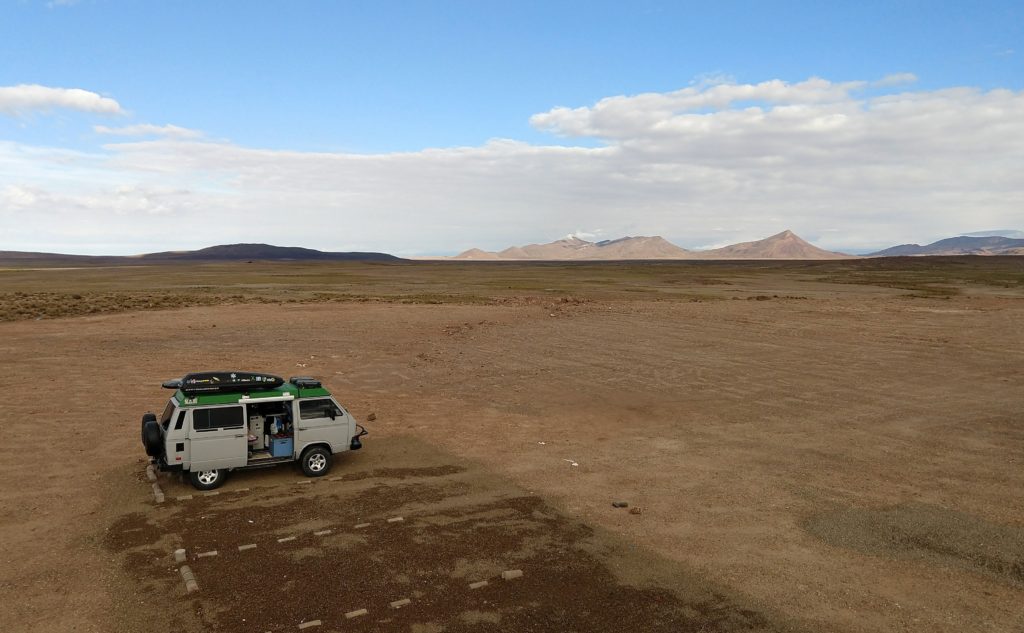 Arriving into Uyuni, we needed to do a little van maintenance. Our rear shocks needed new rubber, so we set up on the street dedicated to stores of car parts alongside locals and truckers fixing their issues too.
Arriving into Uyuni, we needed to do a little van maintenance. Our rear shocks needed new rubber, so we set up on the street dedicated to stores of car parts alongside locals and truckers fixing their issues too.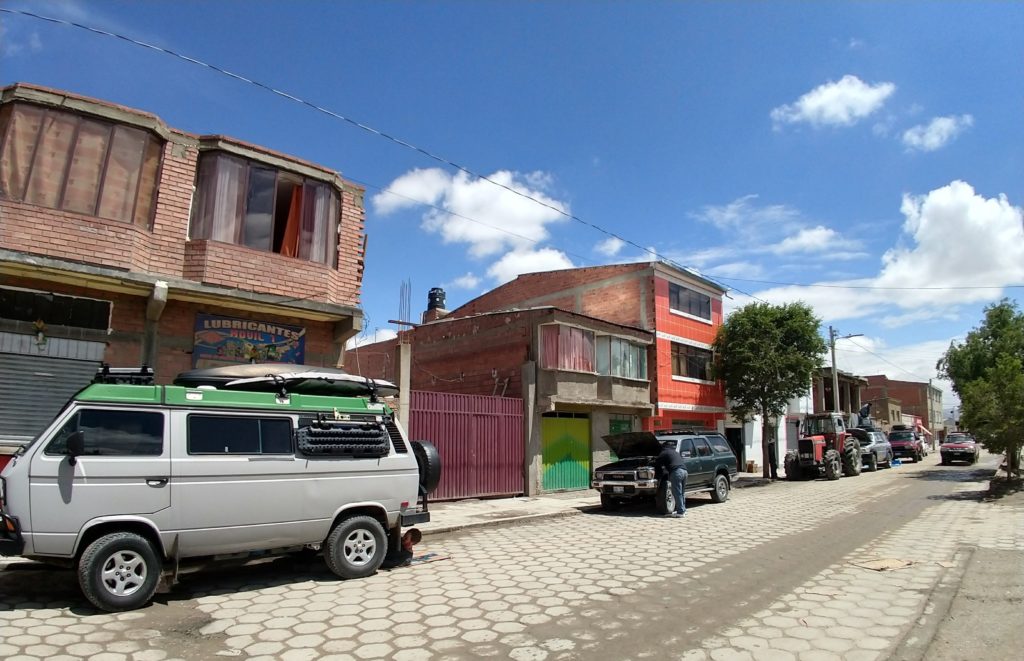 Our time camping near Uyuni was spent in an old train graveyard where we met other nice travelers (travel name ‘Team Matt’) with a rig Matt almost traded for Koru!
Our time camping near Uyuni was spent in an old train graveyard where we met other nice travelers (travel name ‘Team Matt’) with a rig Matt almost traded for Koru!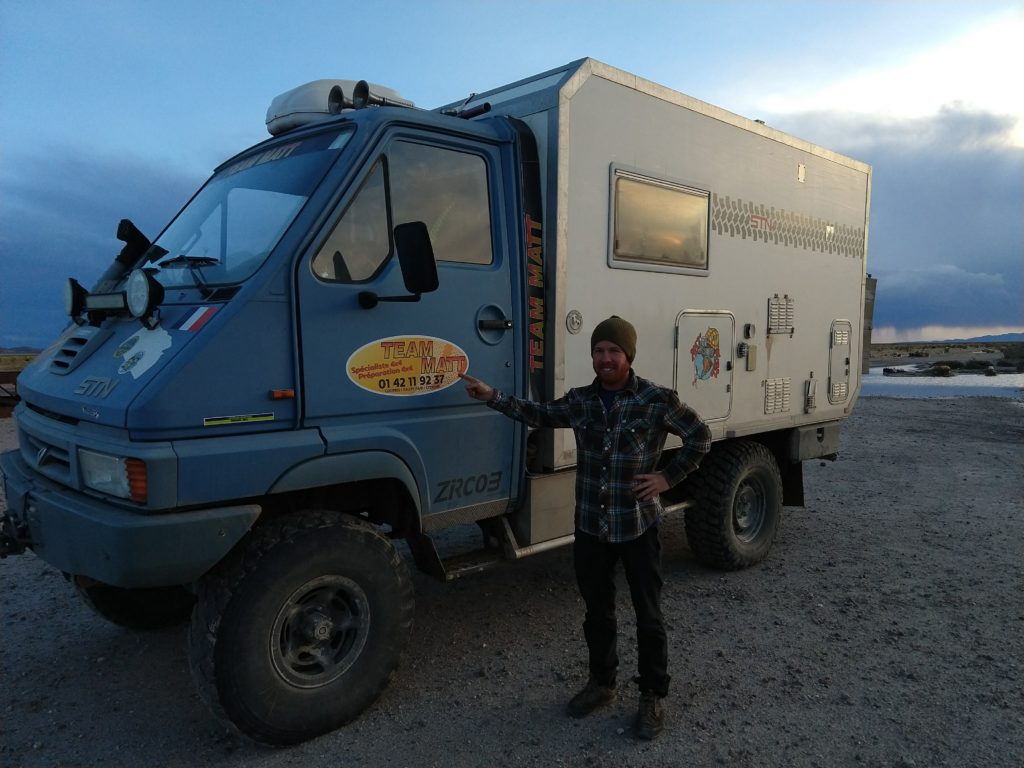
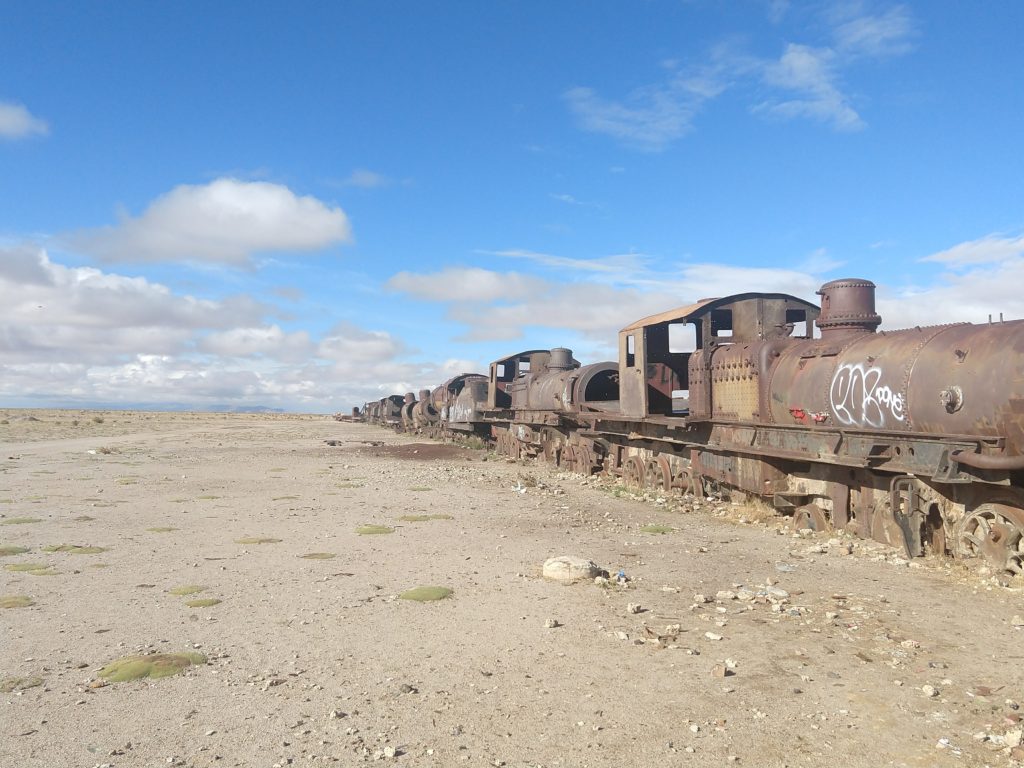 Out in the distance, we witnessed more jaw-dropping weather towards the flats and unforgettable views, not to mention the feeling of old conductor ghosts creeping around us.
Out in the distance, we witnessed more jaw-dropping weather towards the flats and unforgettable views, not to mention the feeling of old conductor ghosts creeping around us.
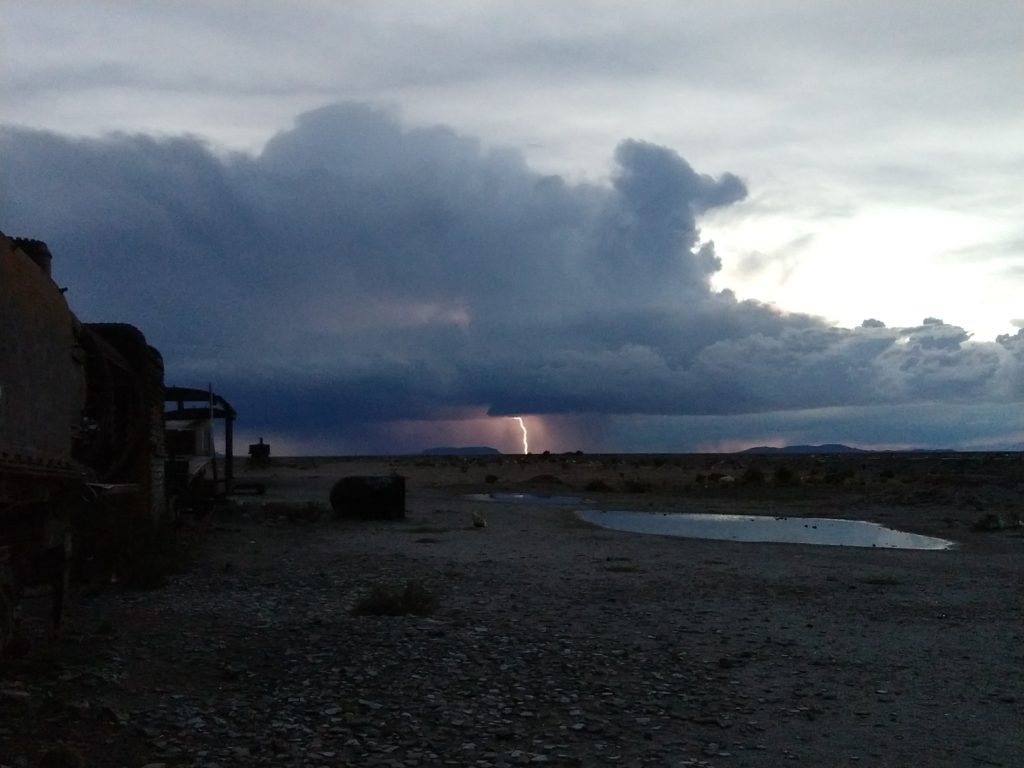 The only discouraging aspect of our time here was the persistent rains, causing small layer of water to cover the flats. We spoke to many tour operators and they were not driving very far onto the flats because of all the standing water. Although great for photos, it was not great to explore the vast expanse for several days while camping, which had been our plan.
The only discouraging aspect of our time here was the persistent rains, causing small layer of water to cover the flats. We spoke to many tour operators and they were not driving very far onto the flats because of all the standing water. Although great for photos, it was not great to explore the vast expanse for several days while camping, which had been our plan. 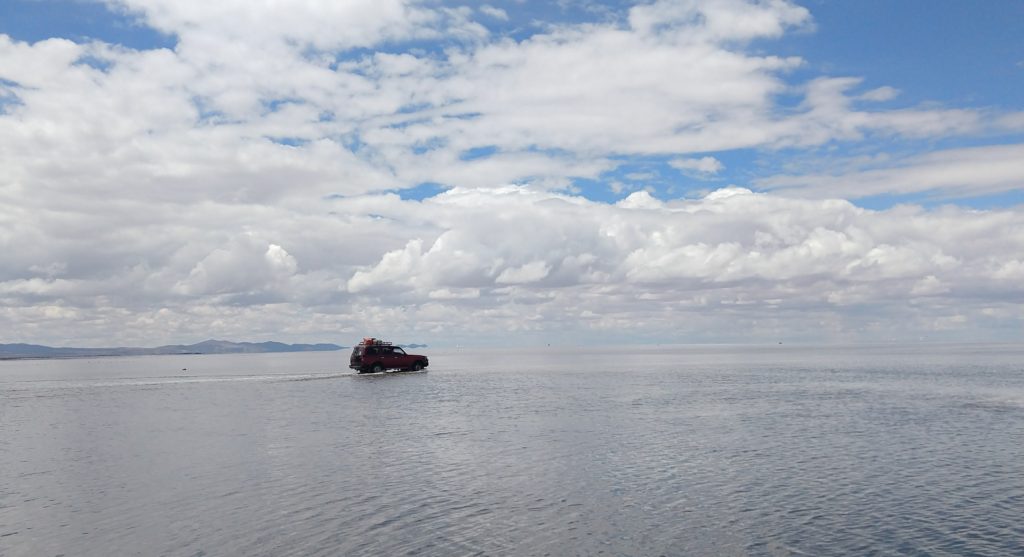 After waiting a couple of days to see if the rains would subside and the flats dry out, we decided just to go for it and take a drive out on the famous salt flats.
After waiting a couple of days to see if the rains would subside and the flats dry out, we decided just to go for it and take a drive out on the famous salt flats. 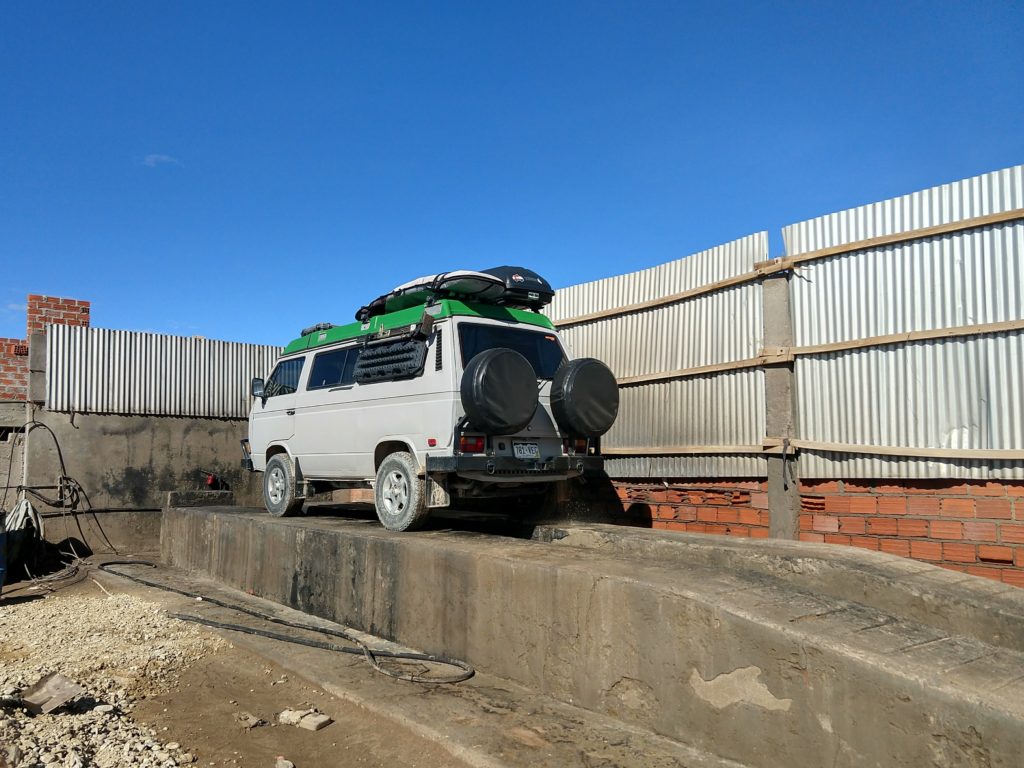 We had to take extra precautions with a thorough cleaning and oiling of the chassis before and afterwards in order to see the small sliver that we did. All the stress and hassle was worth every second we had to spend in this unique place.
We had to take extra precautions with a thorough cleaning and oiling of the chassis before and afterwards in order to see the small sliver that we did. All the stress and hassle was worth every second we had to spend in this unique place. 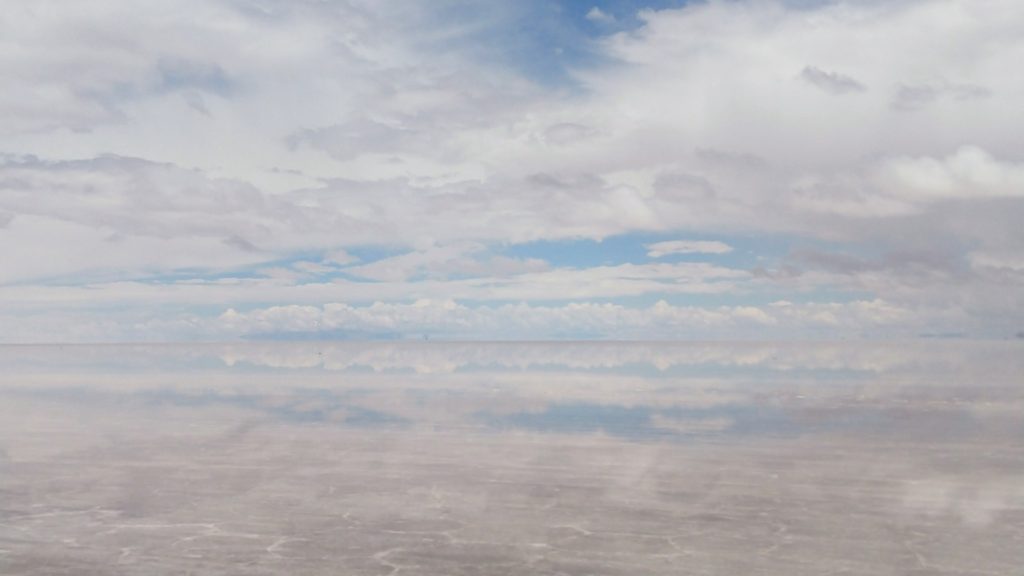
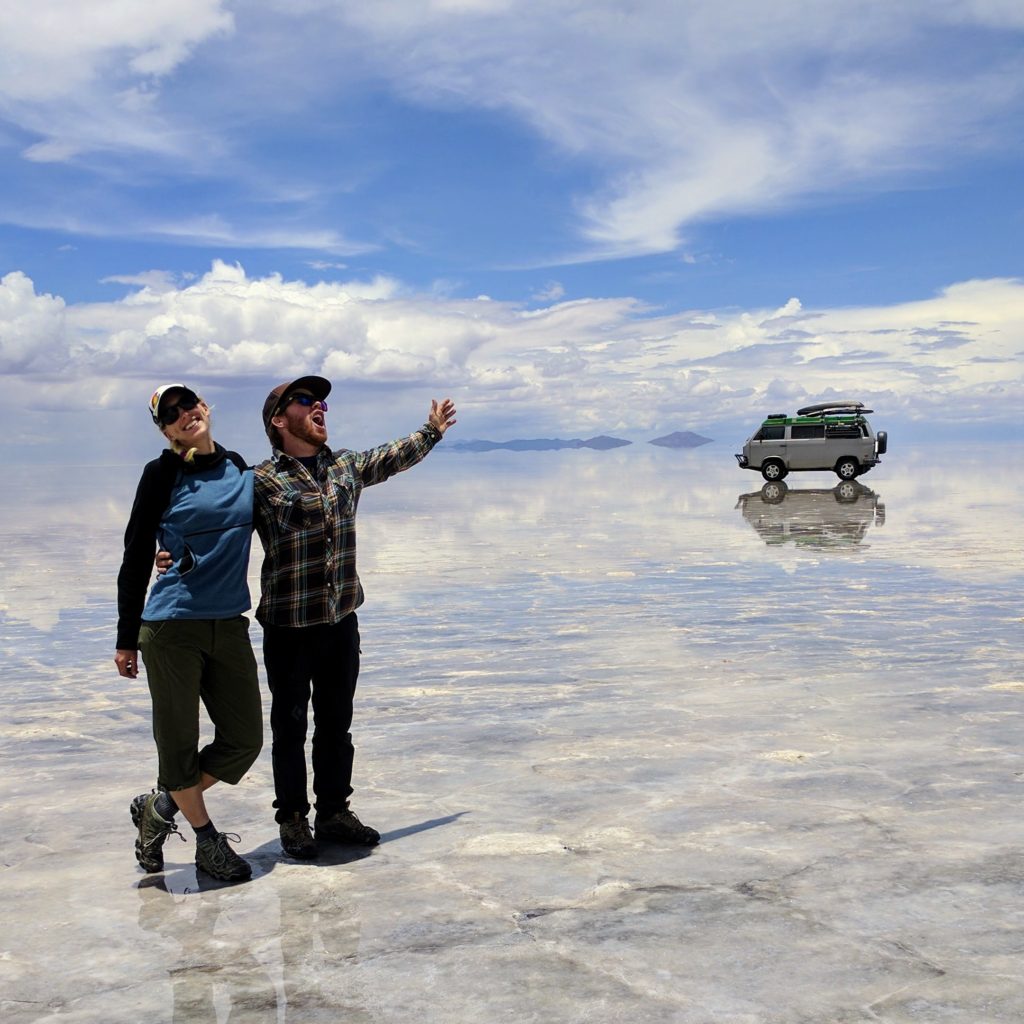
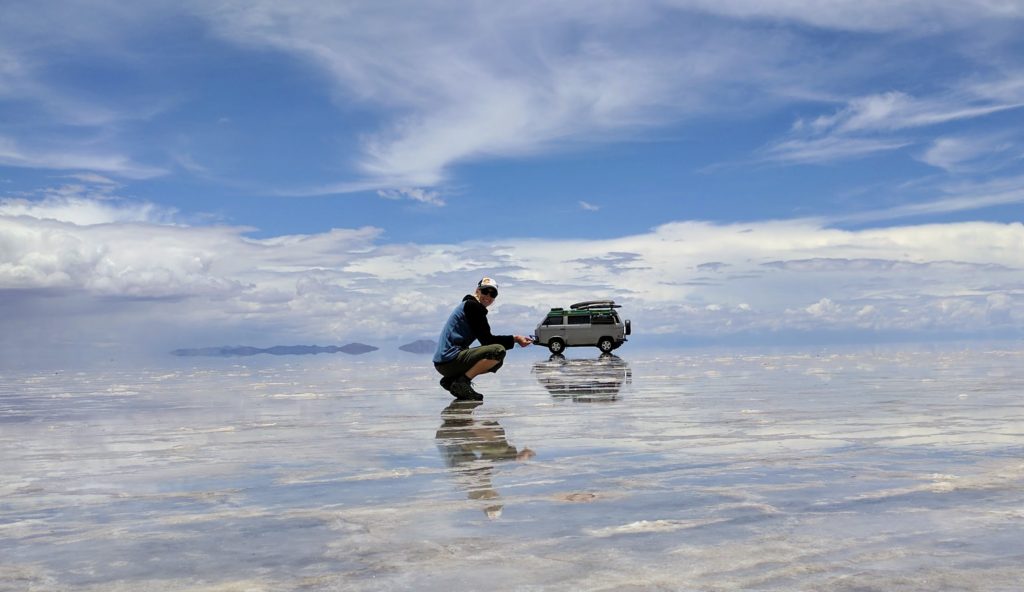
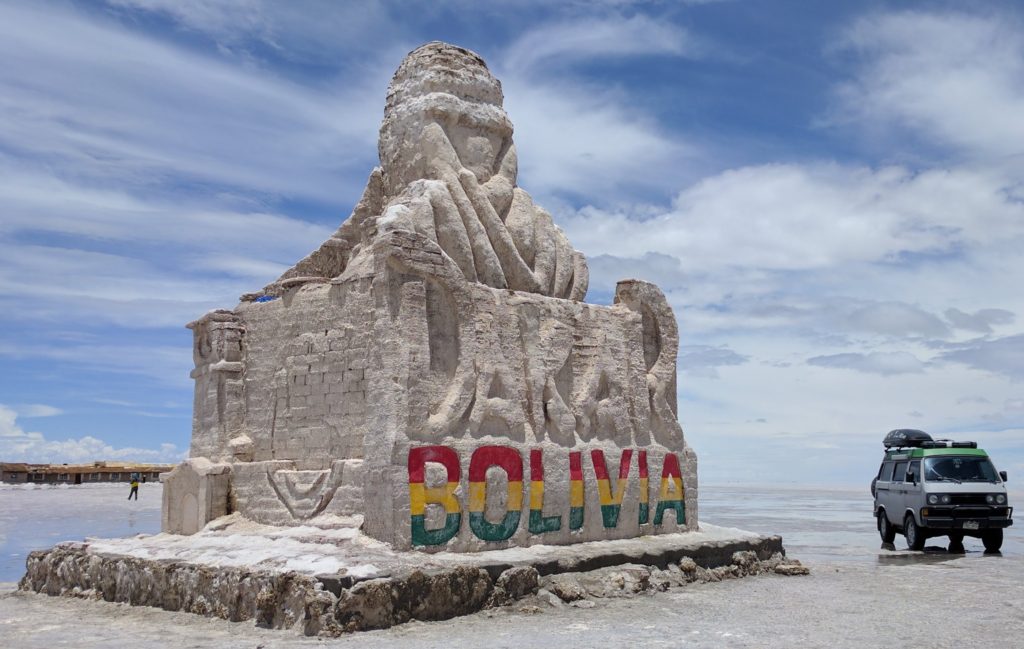 Our exciting time in Uyuni came to a close and we continued further south along the altiplano until we came into Tupiza, the biggest town near the border with Argentina.
Our exciting time in Uyuni came to a close and we continued further south along the altiplano until we came into Tupiza, the biggest town near the border with Argentina. 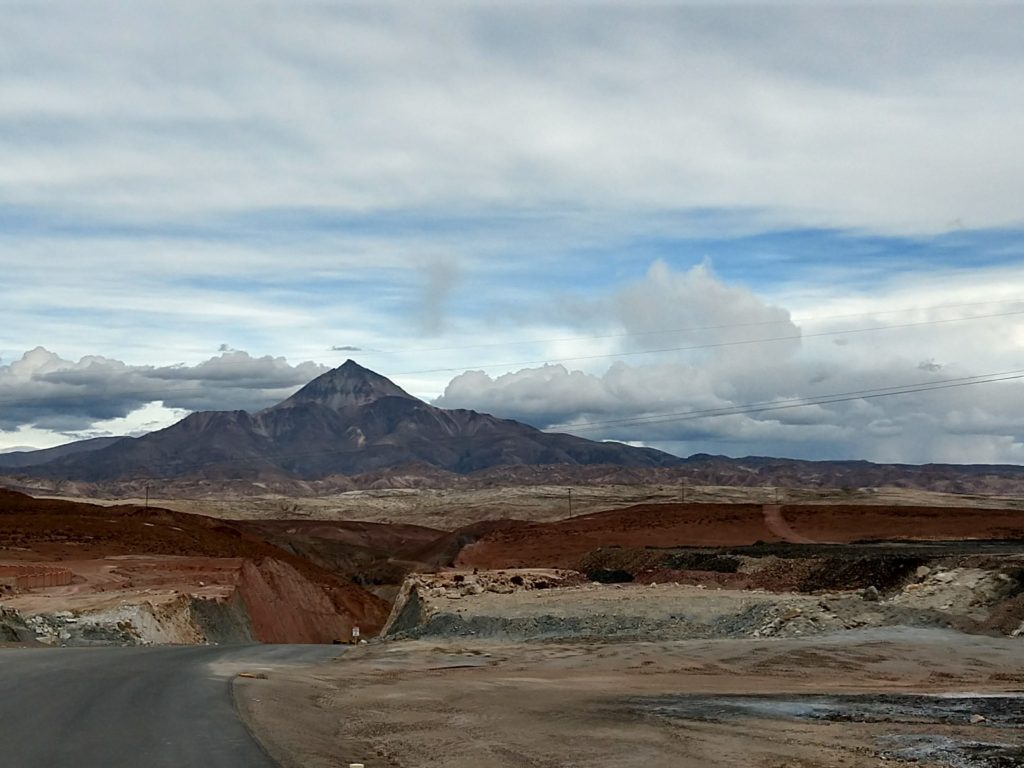 The sedimentary geology in Southern Bolivia is simply astonishing with outcroppings everywhere you look.
The sedimentary geology in Southern Bolivia is simply astonishing with outcroppings everywhere you look. We’d read about a canyon that is possible to camp in called Inca Canyon. After the standard lap or 3 around town looking for the right road, we eventually found good directions and drove in to discover we had the place to ourselves.
We’d read about a canyon that is possible to camp in called Inca Canyon. After the standard lap or 3 around town looking for the right road, we eventually found good directions and drove in to discover we had the place to ourselves.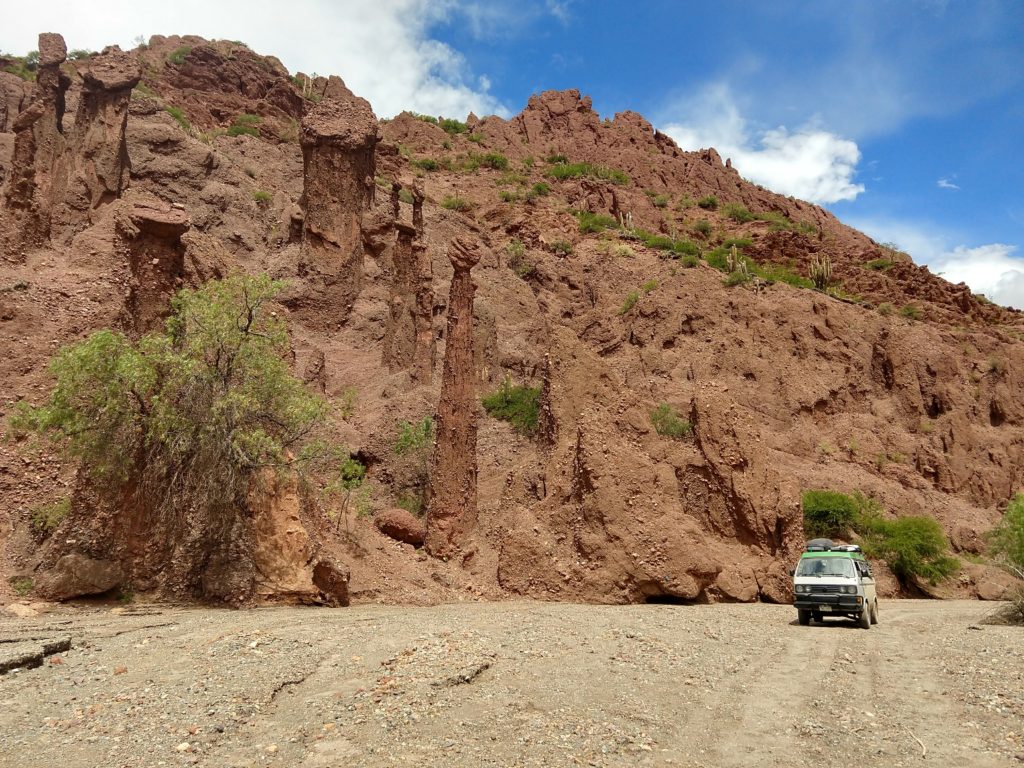
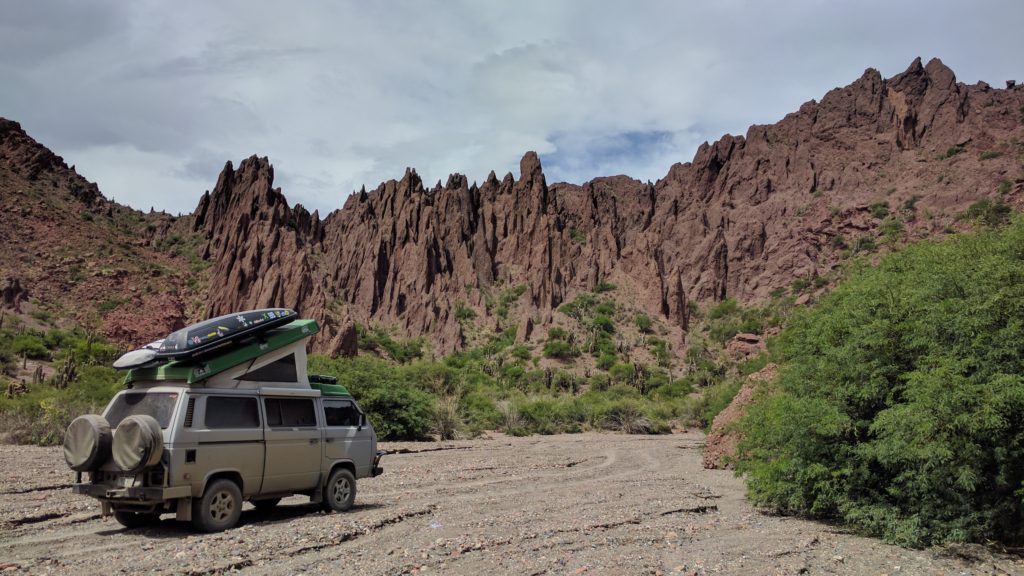 We made a quick snack and set out for a slot-canyon hike reminiscent to hikes in the deserts of Utah.
We made a quick snack and set out for a slot-canyon hike reminiscent to hikes in the deserts of Utah.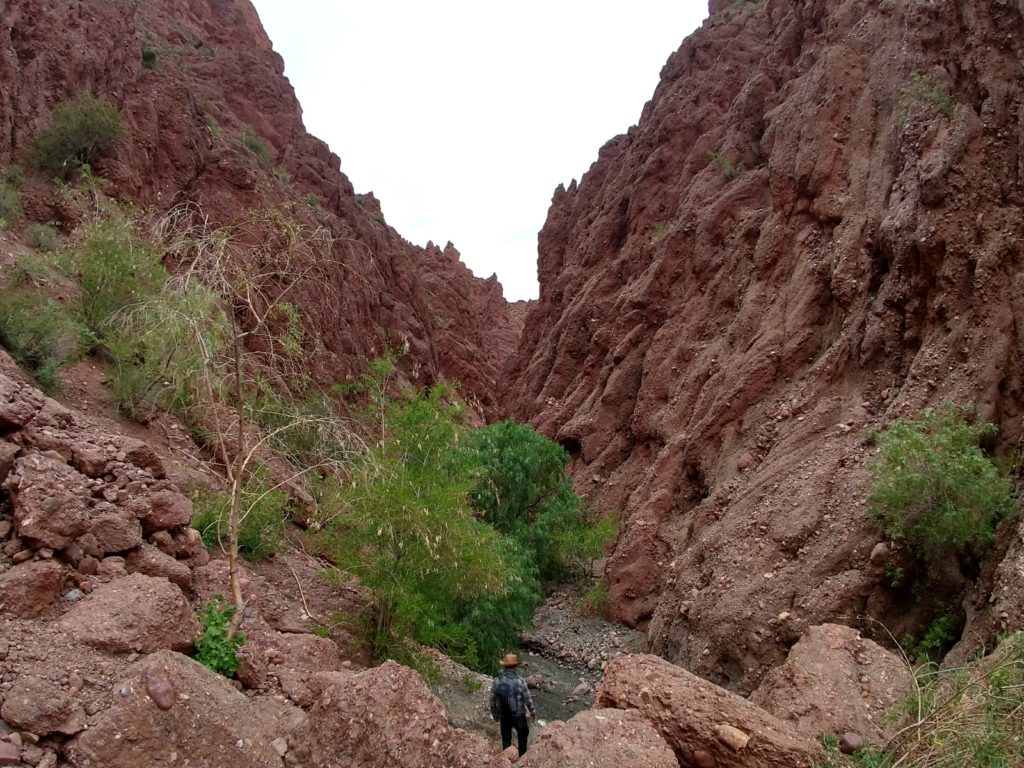
 Feeling great about our times spent in what feels like the wild west of Bolivia, we prepped ourselves to continue on into Argentina. Although we felt like we could have spent many weeks more in Bolivia, we opted to keep moving in order to reach Patagonia in it’s prime summer months. Arriving at the Argentinian border, we had a our first dose of first world technology where the entire van was literally scanned.
Feeling great about our times spent in what feels like the wild west of Bolivia, we prepped ourselves to continue on into Argentina. Although we felt like we could have spent many weeks more in Bolivia, we opted to keep moving in order to reach Patagonia in it’s prime summer months. Arriving at the Argentinian border, we had a our first dose of first world technology where the entire van was literally scanned.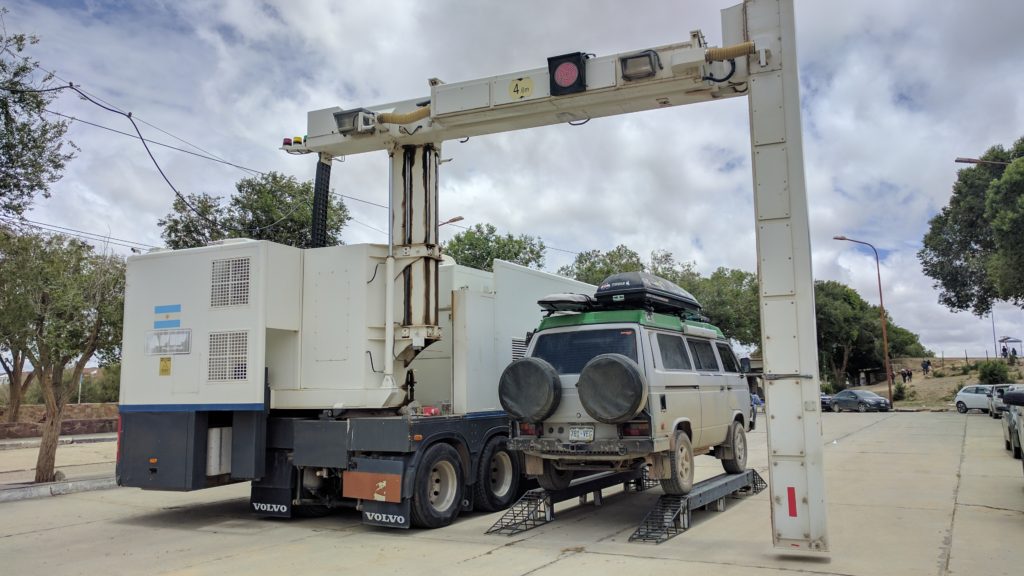 Realizing we were venturing away from what we’ve come to know as Latin America, we couldn’t help but feel a little sad, yet the underlying feelings of adventure and curiosity stayed with us and we were excited to see what Argentina and Chile had to offer.
Realizing we were venturing away from what we’ve come to know as Latin America, we couldn’t help but feel a little sad, yet the underlying feelings of adventure and curiosity stayed with us and we were excited to see what Argentina and Chile had to offer.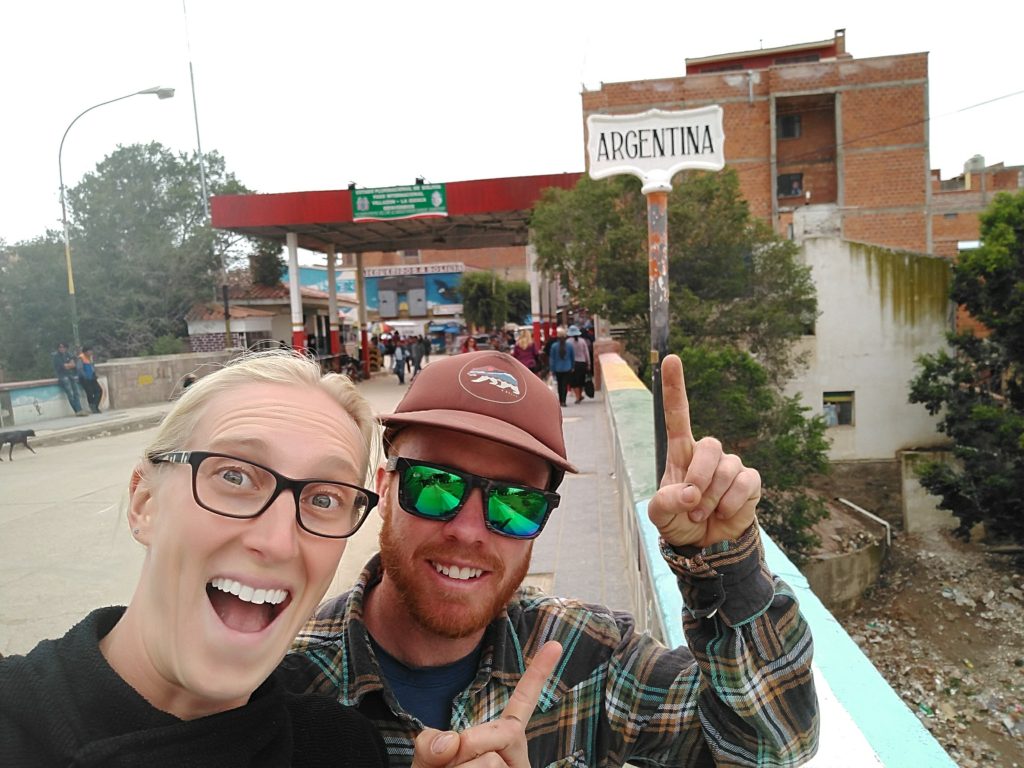 Leaving the border southbound, the colorful geology did not relent. Instead, every corner revealed gorgeous scenery with relatively no people, which is a lovely combination that can be hard to find these days.
Leaving the border southbound, the colorful geology did not relent. Instead, every corner revealed gorgeous scenery with relatively no people, which is a lovely combination that can be hard to find these days. 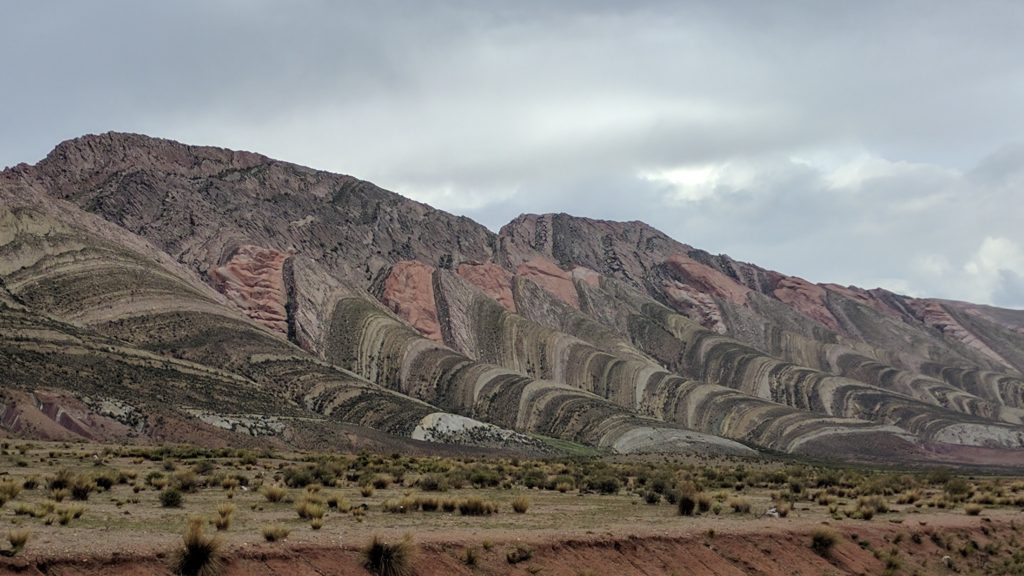 It has become blatantly obvious on this trip that borders are a creation of man, full of meaning while simultaneously meaning nothing. Both the landscape and Koru had no way of distinguishing the border, so we decided to follow their leads and enjoy it how nature intended.
It has become blatantly obvious on this trip that borders are a creation of man, full of meaning while simultaneously meaning nothing. Both the landscape and Koru had no way of distinguishing the border, so we decided to follow their leads and enjoy it how nature intended.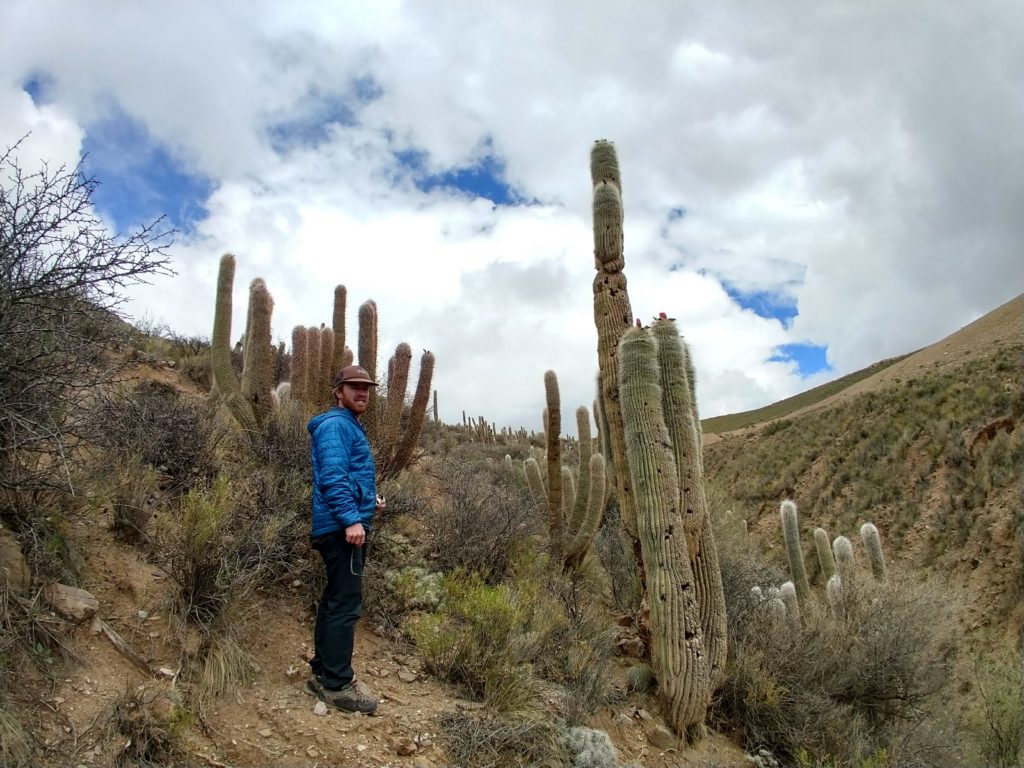
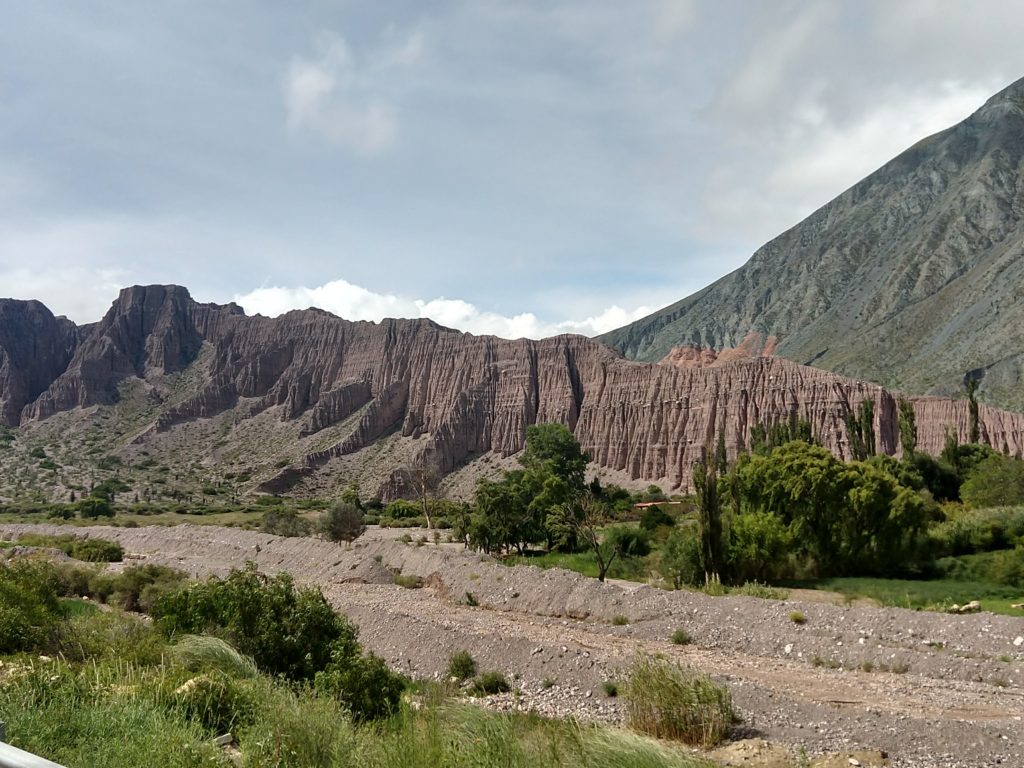 However, our fellow humans did remind us of our planetary location with a monument for the tropic of Capricorn. Just another indicator of how far we’ve come on this epic journey.
However, our fellow humans did remind us of our planetary location with a monument for the tropic of Capricorn. Just another indicator of how far we’ve come on this epic journey.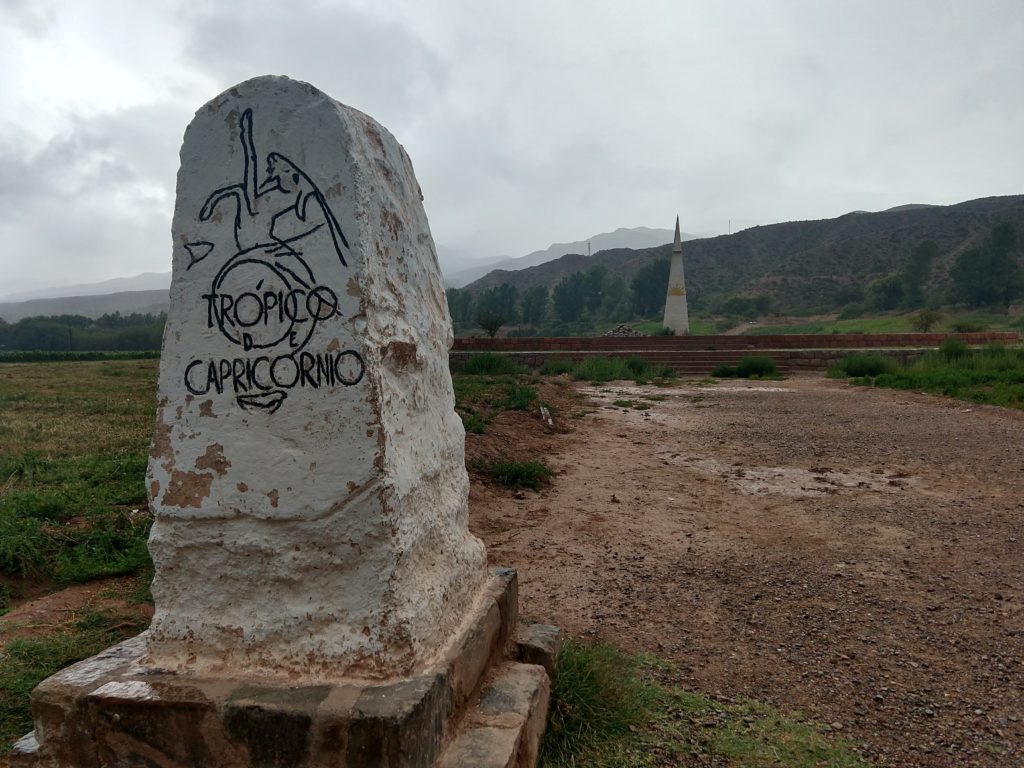
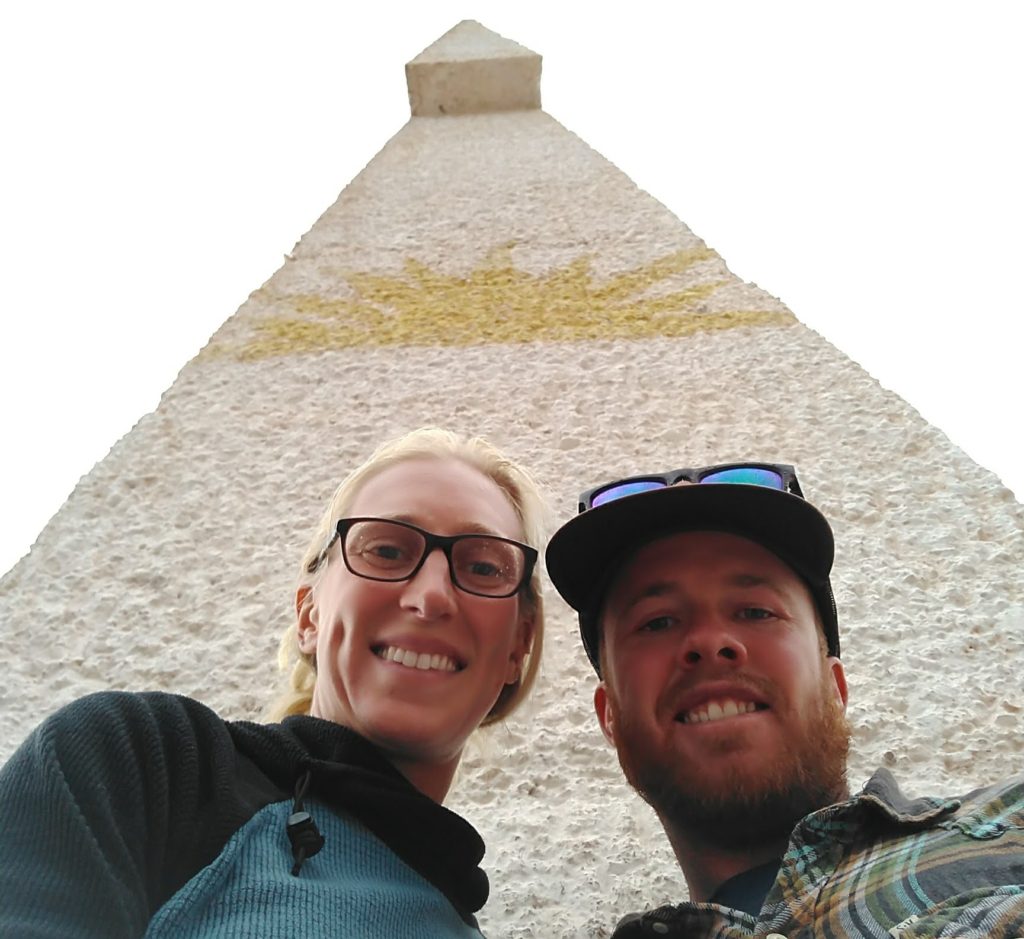 Heading down the road, we made a pit stop for a couple of nights in the Pumamarca region which is famous for its colored mountains. Here we enjoyed our first taste of Argentinian empanadas, wine and great hike.
Heading down the road, we made a pit stop for a couple of nights in the Pumamarca region which is famous for its colored mountains. Here we enjoyed our first taste of Argentinian empanadas, wine and great hike.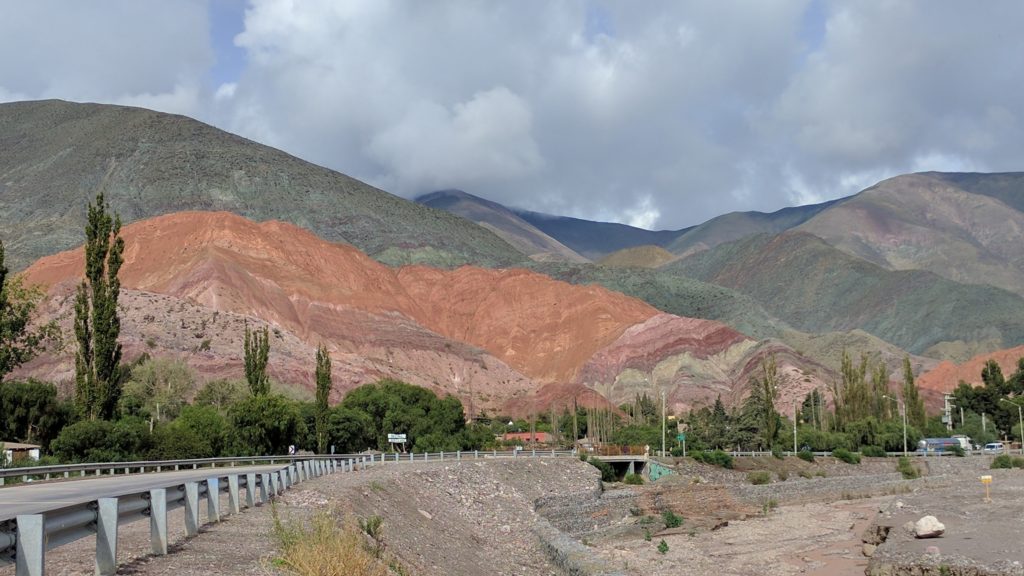
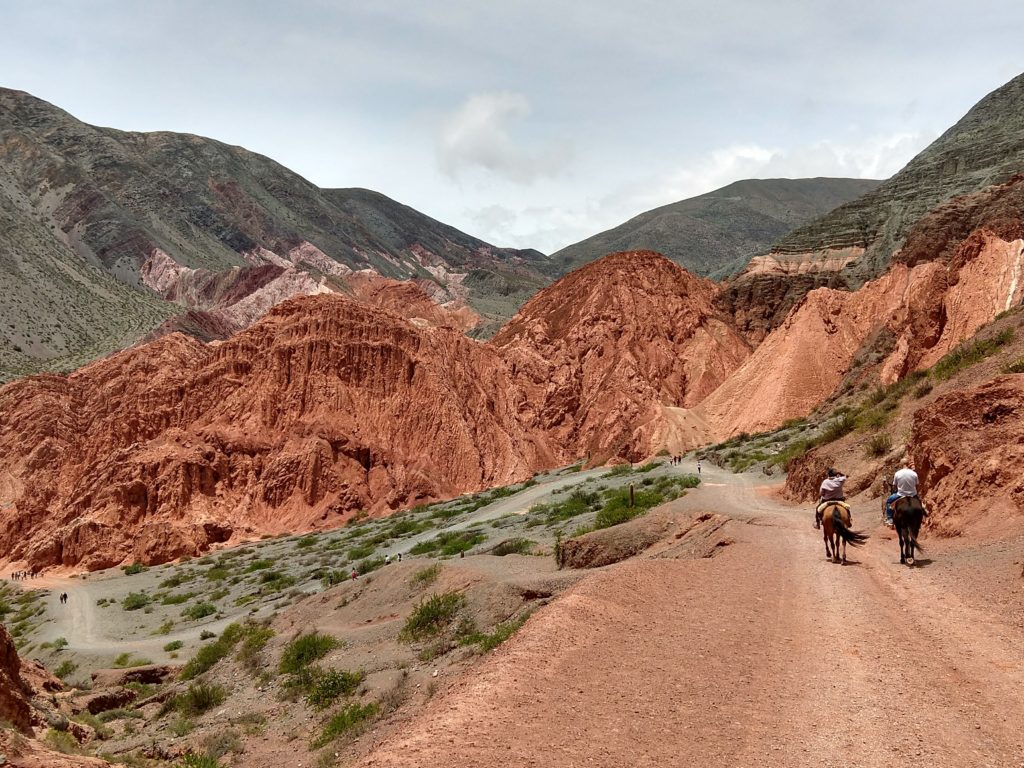 Having known our first trip to Argentina would be short, we headed towards the Chilean border, but not before stopping at another salt flat, Salinas Grandes, along the way to play with the mirrors the shallow water makes.
Having known our first trip to Argentina would be short, we headed towards the Chilean border, but not before stopping at another salt flat, Salinas Grandes, along the way to play with the mirrors the shallow water makes. 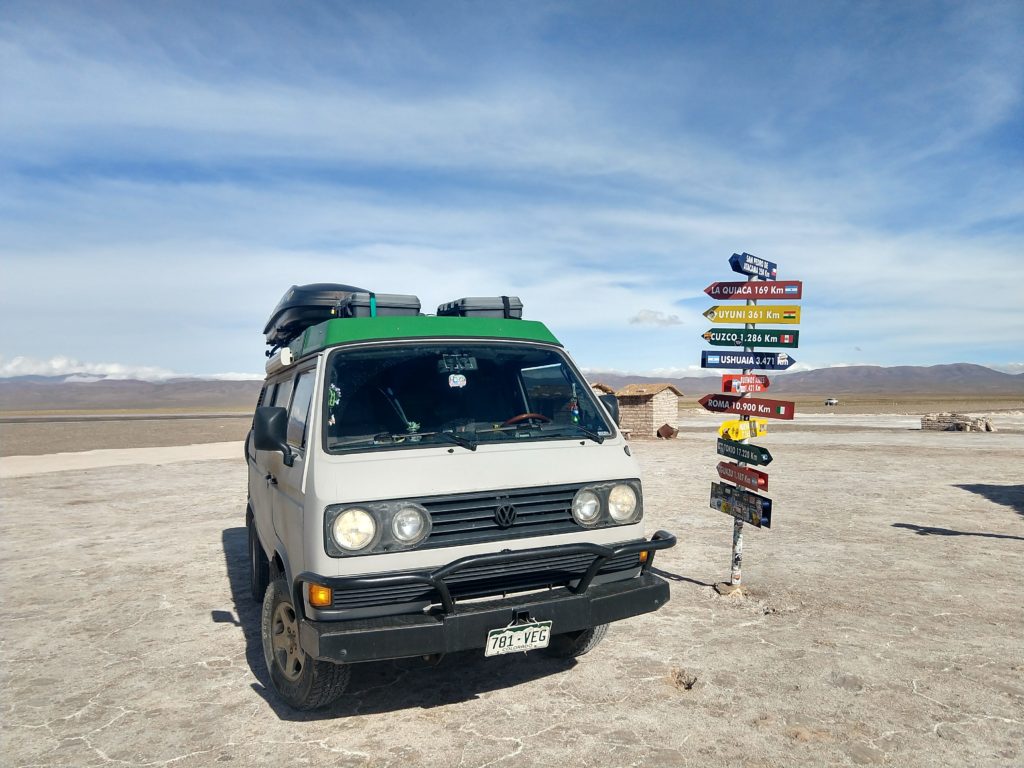
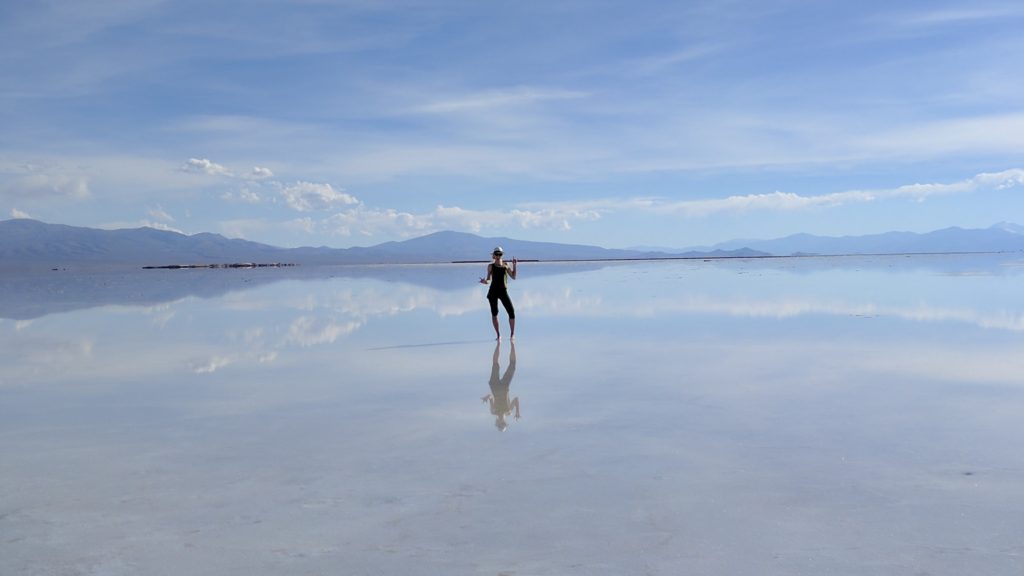 Salt mining is common here, and it was really neat to see the piles of salt out in the distance drying.
Salt mining is common here, and it was really neat to see the piles of salt out in the distance drying. 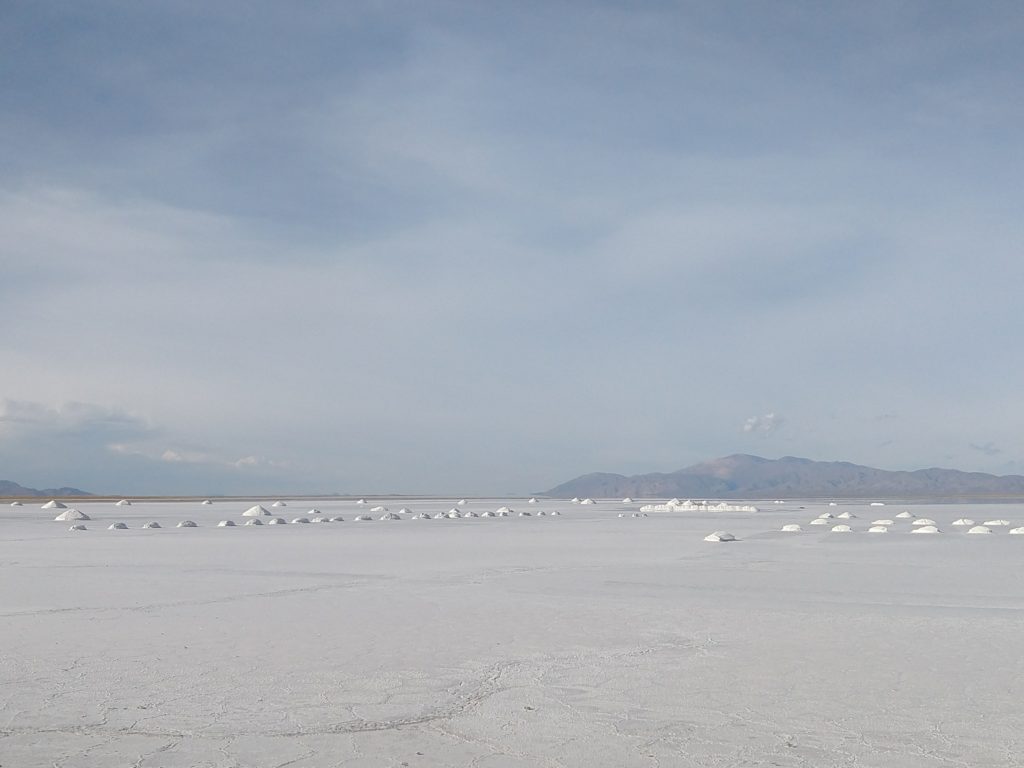 Kruisin right along, we drove up and over Jama pass (over 16,000ft!) to dip into the northern part of Chile. Knowing we’d be back and forth between Argentina and Chile many many times, we positioned ourselves to bid a quick farewell to Northern Argentina the next morning knowing the wine and empanadas will still be here when we come back.
Kruisin right along, we drove up and over Jama pass (over 16,000ft!) to dip into the northern part of Chile. Knowing we’d be back and forth between Argentina and Chile many many times, we positioned ourselves to bid a quick farewell to Northern Argentina the next morning knowing the wine and empanadas will still be here when we come back.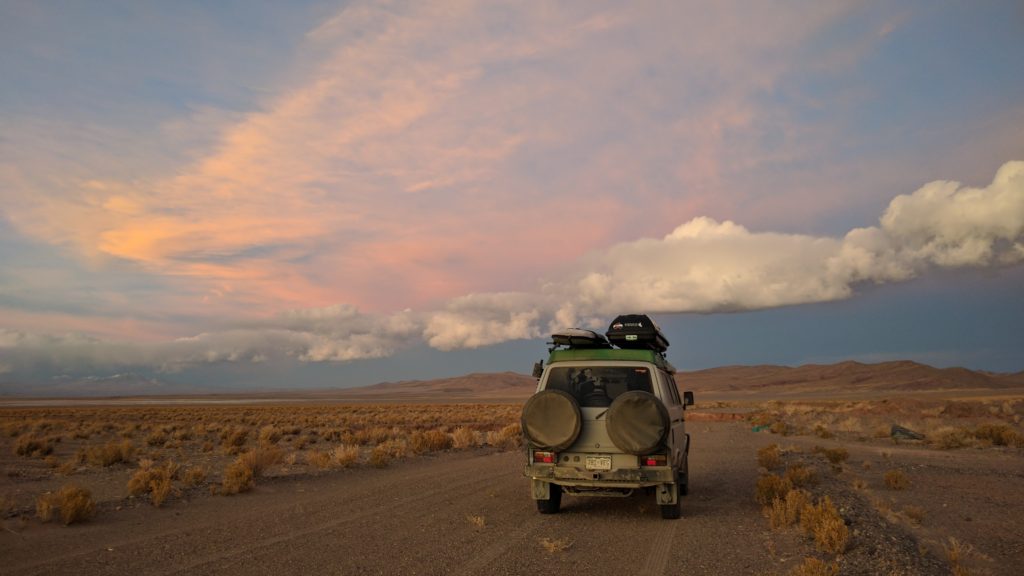
4 thoughts on “Absorbed by the Amazing Bolivian Altiplano”
Hola amigos..qué increíbles fotos..estoy realmente impresionada..el lago de sal es un espejo enorme, y único en América.
Las montañas con los minerales que permiten observar formas peculiares en su estructura.
Al parecer Ésta..es una zona desértica..con muy poca vegetación.
Me encanta el anuncio con los lugares y sus respectiva distancia. Es una señal para ser fotografiada ?
Espero se encuentren súper bien queridos amigos
..
Y me gustó mucho esta parte del continente.
Love that you share your adventure so eloquently‼️ We just arrived back in Stramboat after a mud season van trip to the southwest. It looks like they are doing something major at your Steamboat home. Maybe siding?
Loved the photos of the multicolored hills and mountains. The salt flats were most impressive also. Another great South American experience for the books!
LOVED your post & pictures… As always – Love you guys too!! Karen ?